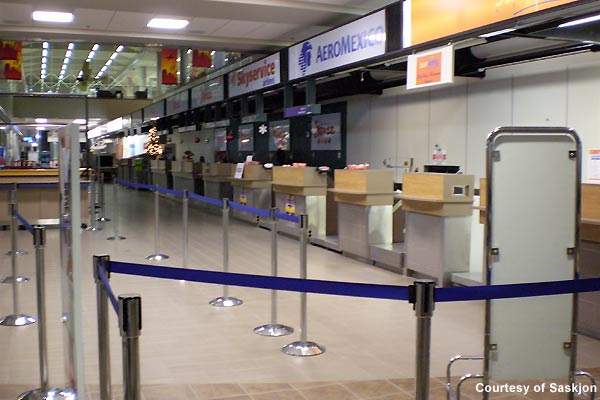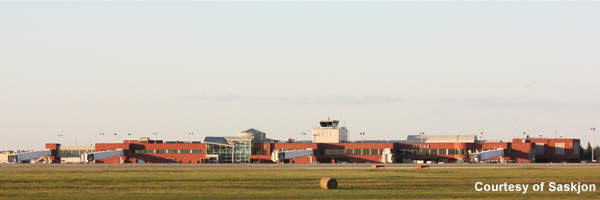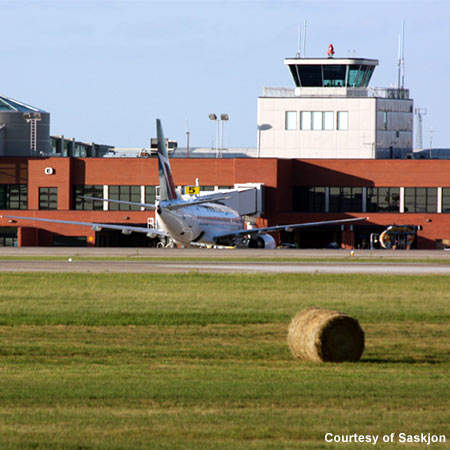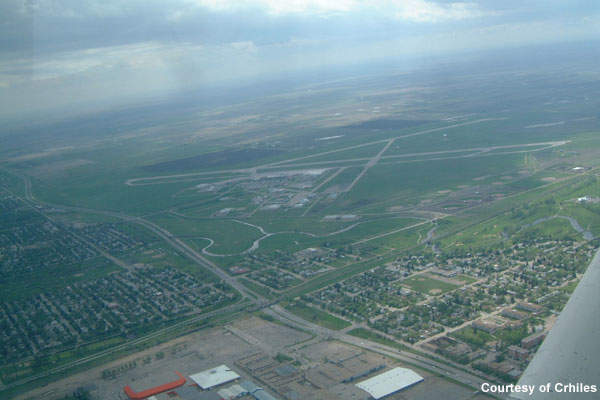Regina International Airport is located about 4km south-west of Regina’s city centre in the province of Saskatchewan, Canada. It is one of 26 airports in Canada’s National Airport System. The airport is owned by Transport Canada and operated by Regina Airport Authority, which took over the operation of the facility in 1999.
The airport catchment area extends from Swift Current in the west, the American border in the south, the Saskatchewan/Manitoba border to the east and Davidson in the north and covers 112,500km². Regina serves as the airport for the south of Saskatchewan, encompassing the communities of Moose Jaw and the regional municipality of Sherwood.
Seven airlines including Air Canada Jazz, Air Transat, West Jet, Northwest Airlines and Aero Mexico provide regular and scheduled and charter air services for passengers and cargo, and long-distance flights to major Canadian airports, Minneapolis and Mexico.
Regina is one of the busiest airports in Saskatchewan and among Canada’s top 20 busiest airports in terms of air traffic movement.
Masterplan
Regina International Airport released an updated masterplan for airport development in July 2009. The masterplan envisages expansion between 2007 and 2027.
The masterplan was based on a variety of factors including passenger traffic forecast, aircraft activity and cargo forecasts. Regina airport saw a high growth in domestic scheduled and charter services between 2004 and 2008. The greatest passenger traffic movement was recorded in 2008, with the number of passengers exceeding one million.
Major development plans include extending Runway 13-31 to 9,000ft from 7,900ft, building high-speed rapid exit taxiways, expanding baggage make-up and breakdown rooms, expanding immigration operations in the north-west quadrant of the terminal building, making provisions for a cargo expansion reserve and constructing an airport hotel.
Public transport will also be extended for easy access to the airport. Surface parking will be introduced and the number of parking stalls will be increased.
Runways
Regina International has two intersecting runways. Runway 13-31 is the primary runway. It is 7,900ft long and is served by a full-length parallel taxiway with five exits. It is certified to 4C precision standards and equipped with a category I instrument landing system together with high-intensity approach lighting for low-visibility operations. The runway has a pavement load rating (PLR) of 11 and was renovated in 1992.
Runway 08-26 is the secondary runway. It is 6,200ft long and certified to 4C non-precision standards. There is no taxiway on the west half, requiring aircraft to taxi on the runway. It has a PLR of 11.
Terminal features
The first phase of the expansion of the terminal building was completed in 2005. Phase 1 included expanding the existing terminal building to 4,400m2. The building includes a new international arrivals area, baggage carousels, a large post-security holding room and a passenger loading bridge.
The second phase started in 2008 and introduced a new customs area and new shops and restaurants. A jetway is currently being constructed between gates five and six. The main floor of the terminal building houses the arrivals section for domestic and international passengers.
It also has two entry vestibules and a Canadian Air Transport Security Authority (CATSA) screening area. The main floor also has an airside viewing area.
The second floor handles departures with pre-board screening and has eight aircraft loading bridges. It features a huge post-security holding room and food and beverage areas before and after screening.
Screening
CATSA has set up new pre-board screening procedures and ran a test trial at the airport. The 14-week trial began on 26 August and ended on 1 December 2009.
The screening trial has four phases and is carried on two of the airport’s four pre-board screening (PBS) lanes. Running a PBS test trial on two lanes supplied baseline data to compare with data from other lanes that remained unaffected.
The first phase, which ended on 29 September, focused on educating passengers about metal detectors. The first phase continued for five weeks and the rest ran for three weeks each. The second phase brought additional procedures and modifications to screening.
In the first phase of PBS trial, passengers who triggered metal detector alarms were told the causes. Passengers who triggered alarms for a second time were screened using hand-held metal detectors and physical searches.
In the second phase, passengers who triggered alarms for a second time were screened again in a separate secondary search area (SSA). Phase two also featured a random alarm on the detector that selected additional people for the SSA.
Phase three, along with phase one and two procedures, introduced new larger X-ray bins and a screening officer performing random explosive trace detentions at the front of the screening line. In phase four the explosive trace detentions were moved to the original position at the end of the line, with passengers loading their own bins for X-ray. A screening officer helped direct passengers.
Facilities
The pre-screening area has a café and restaurants and retail stores. The pre-screening area also has hotel reservation counters and cash machines. This area houses one of the largest working sundials in Canada, which is located above the stairs in the arrivals hall.
The post-screening area includes a public lounge with televisions, café and massage chairs. This area also includes the AC Jazz Maple Leaf Lounge. Wireless internet is available throughout the pre- and post-screening areas.
Parking
The airport has 113 metered stalls for short-stay parking and 610 stalls for long-stay parking. Long-term parking stalls include complimentary electricity. The terminal building has 120 spaces for rental vehicle parking and 140 spaces for employee parking.
The airport provides car rental services offered by six companies. Taxi services are available outside the terminal doors.







